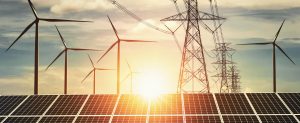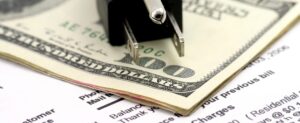As we all grapple with record-breaking heat, an undeniable reality is coming into focus; that heat waves are occurring more often, they are more intense, and their duration is longer in Utah because of climate change.
Thankfully, local governments like Salt Lake County recognize the threats of climate change as well as the opportunities to address it. Salt Lake County Health Department’s “Climate Adaptation Plan for Public Health: A Framework to Prepare for the Health Impacts of Climate Change”provides background on local climate challenges along with actions that can be taken to improve the county’s resiliency amid a warming world, including addressing the disproportionate health impacts facing our most vulnerable populations.
I had the pleasure of sitting down with Corbin Anderson, the Air Quality Bureau Manager at the Salt Lake County Health Department and Convener of the Utah Climate Action Network, to discuss the health implications of extreme heat and what needs to be done to ensure that vulnerable populations are safe and cool during this punishing summer and beyond.
Health Implications of Extreme Heat: Q&A With Corbin Anderson
Q (Bousson): Knowing that we are experiencing more and more days of extreme heat in Salt Lake County per year due to climate change, could you tell us how extreme heat impacts public health?
A (Anderson): The health implications of extreme heat (days above 100° F) include heat exhaustion and heat stroke, which could result in the loss of orientation, consciousness and in some cases death due to severe dehydration and overheating of the body. We are going to see increased mortality because of extreme heat conditions, especially for vulnerable populations who don’t have access to air conditioning. Extreme heat also disproportionally affects residents with chronic health conditions such as cardiovascular disease, respiratory disease (e.g. asthma), cerebrovascular disease, and diabetes because extreme heat deprives them of their energy and exacerbates their symptoms.
From an air quality perspective, we are in an ozone non-attainment area and the ozone season will be longer because spring comes earlier and the summer temperatures occur earlier, where the radiation from the sun peaking during the middle of the day produces ozone earlier…not to mention that wildfire season is becoming all-year round. Extreme heat is not going to get any better moving forward so local governments and public health institutions need to plan better moving forward.
Q: How does extreme heat disproportionally impact low-income communities and communities of color in Salt Lake County?
A: Historically, extreme heat facing vulnerable populations is a fundamental public health issue that needs to be addressed. Vulnerable residents who do not have access to air conditioning in their homes, work outside during the hottest times of the day, as well as our homeless population are disproportionally impacted by extreme heat temperatures. Similar to how we ensure we have good water quality in Salt Lake County through water systems standards, whether it’s a local government, a local planner, or a business, we need to develop standards that account for our vulnerable populations as we experience more days of extreme heat. I am seeing that we need to do the same thing with our infrastructure in terms of having safe places to live for historically vulnerable residents.
Q: What are some available resources or services in Salt Lake County that will help residents keep cool during the summer?
A: We currently have 57 cooling center facilities throughout the county, which include senior centers, recreation centers, libraries, etc. If residents don’t have air conditioning (mine failed last summer), they can go to any of these cooling centers in the county, but they are not available for 24 hours. Cooling centers are an immediate band-aid compared to a systematic approach that is needed to address heat emergencies. Extreme heat is projected to start earlier and last longer every year. It’s not just July anymore so we need to invest into resources so that people are not adversely impacted by heat waves.
Q: Understanding that we are going to experience even more extreme heat days if we choose not to address climate change, which strategies or solutions come to mind that will help the Salt Lake County community adapt and become more resilient to extreme heat?
A: Our ability to be safe amid a heat emergency, in my opinion, is analogous to having access to clean water and living and working in a safe environment when we have these heat emergencies. We need to figure out a way to help pay for air conditioners and other resources, whether through public funds, grants, legislation, etc. so that vulnerable residents are not directly exposed to extreme heat. We need an all-hands-on-deck approach to addressing this and yes, we can do this. Similar to how the county was a lead facilitator with responding to the COVID pandemic, everyone needs to be involved with climate adaptation by shaping our systems, infrastructure, and public utilities through the lens of climate resiliency, including extreme heat emergencies.





